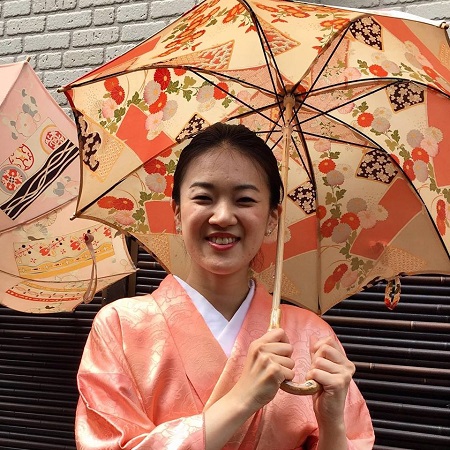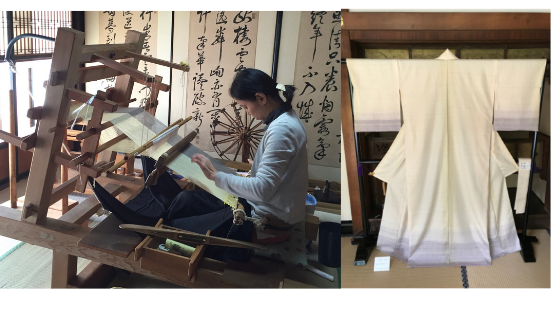Why Kimono
Historian often argues the bias nature of westernaziton due to abundant resources and influence a group tend to hold.
The recent incident, yes incident has shown us an entry to how this bias movement take place but through modern construct,when Ms Kim Kardashan West decided to name/register her patent of shape wear, as wait for it “kimono”.
Many of us are aware of what happened next.
Kimono being a cultural symbol of Japan, the culture spoke.
While it is easier to google and read through wikipedia on what kimono is about and since one must be aware of the true nature and history behind Kimono, we have decided to take this opportunity and explore its nature, history with a driven industry leaders.
After Kimono
“On the bright side I’m glad that this event has show cased to the world, the importance and influence “Kimono” has as a traditional Japanese garment.
Sayoko Yamamura, one of the startup entrepreneur in the Japanese kimono industry shared her insight.
It is fair to say an event like this that seems recent, has always been around especially with kimono. For example it has come to my attention that in Singapore, there are companies that sell “kimono” with much thinner garment than the original and even this is contributing to the public knowledge of what kimono is about.
Sayoko continued.
I think for such reality one of the solutions is for those who are knowledgeable such like people in the original Japanese kimono industry to raise their voices in an effective manner and start putting more effort into the promotion of their work.
I believe by increasing the visibility of Japanese authentic kimono scene we can take charge and support the longevity of the authentic nature.”
As a newbie entrepreneur Sayoko has been determined to solve a problem current Japanese kimono industry has been struggling with.
According to the Ministry of Economiy, Trade and Industry the modern kimono industry peaked in 1975 and has been shrinking since.
Part of the hurdles is the popularity of European and western styled fashion. Akizakura a start up founded by Sayoko Yamamura produces daily necessities designed with the garment from a used kimono cloth. Through 2 of Akizakura”s main product line an umbrella and folding fan(Sensu), Sayoko”s company is focused on the upcycle of kimono that are left in closet and rarely being used.
“The reason I chose umbrella as a product line is because umbrella in Japan has been a symboled of unity and harmony. This is what matters to me personally and so as for our brand. Since ages, Kimono would change shapes and sizes by being reused for many different purposes such as children’s play clothes, rags” This habit originated from “The habit of Re”, a perception within Japanese culture that emphasize the respecting of the nature. Thus they did not waste the silk and cotton that nature gave us.
Sayoko concluded.
The product line of Akizakura Kimono colored umbrella and folding fan are the expression of that tradition in a modern form that encourages pointing a light to those kimono left in closet without frequent use.
(pic : sayoko yamamura founder director Akizakura)
During Kimono
Meet Yuka Okubo, founder and director of Inori. A project that aims to pass kimono
hand dyeing & weaving techniques to the next generation.
Born in Tokyo where modernization has been a boom, Yuka fantasized wearing her
own handmade kimono in a daily basis. With no connection in her 20s she decides to
jump into the industry and become an “oriko”: kimono weaver.
While there many types of practice behind the garment used to craft a kimono, Yuka
will decide to master the practice of “Yūki-tsumugi” a Japanese craft of silk cloth
practiced in the vicinity of Yūki in Ibaraki Prefecture.Yūki-tsumugi is know as one of
the most Important Cultural Properties of Japan and has also been registered as
UNESCO Representative List of the Intangible Cultural Heritage of Humanity.
After mastering all necessary practices of crafting a kimono and winning multiple
awards on the way: Yuka textile Maine competition weaving award and more, Yuka
finally achieved her dream of crafting her own “kimono”.
July 2015 Yuka founded a craft studio launching her own kimono brand “野の絢紬
Nonoayatsumugi”
“Nonoaya this name of our brand means utilizing the color from the wild plant and having the privilege of dyeing it into a beautifully patterned kimono and that is exactly what we do at our studio.
Yuka shared with us.
“During this event of a celebrity attempt to trademark kimono I was reminded of how
important the word “kimono” was to me.
Although the tradition is fading, for ages Kimono has been cherished at each home,
and passed from parents to children and from grandparents to grandchildren.
Which also symbolized the deeper perception being “a property of deceased”,a representation of an individual.
For a lot of Japanese people, European or other non traditional clothes do not carry this feeling. That is one of the distinction.”
(pic :Yuka Okubo founderdirector Inoori)
Voices of the culture
A great insight and work of those leaders like Sayoko Yamamura and Yuka Okubo, reminds us the sacred nature of one’s culture. To know and to be reminded of our individual nature from the context of culture may need to be more appreciated widely across the globe. As Sayoko mentioned previously, one or 2 cases like this can be a good teacher at times we may be consumed by things to do and things to post in a daily basis.
Let us remember this historic moment not just as an important moment for Japanese Kimono industry but also as the day people voiced for their culture and the day this showed humanity what really matters in the world we all live in.
A big thanks to 2 wonderful leaders Sayoko Yamamura and Yuka Okubo for making this article possible. You can find both of their work from below. Opening Picturecredit Kevin Xie
Sayoko Yamamura
- kimono to craft Umbrella and Sensu(hand fan)
Akizakura
https://akizakura.net/pages/ourconcept
Yuka Okubo
- Passing hend dyeing to next generation
Inoori Project








